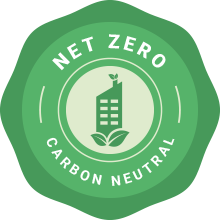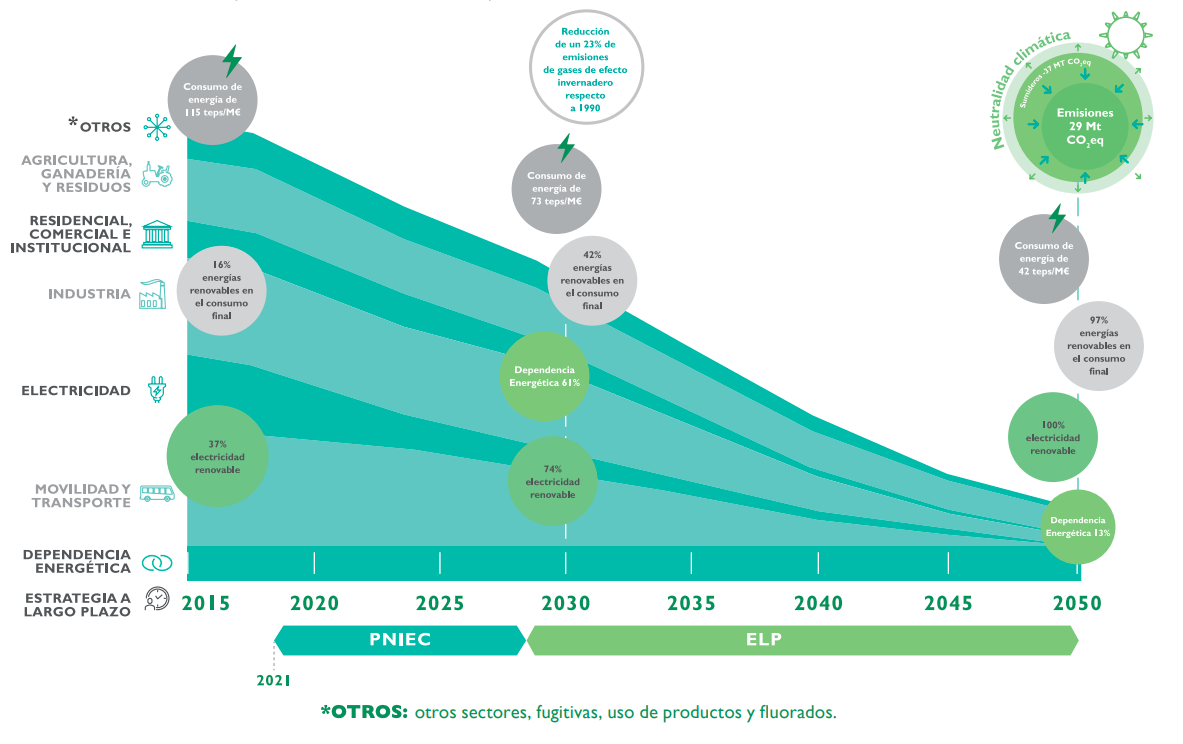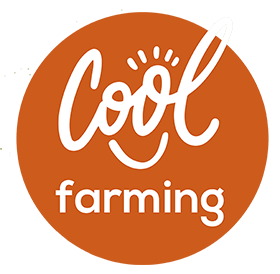Energy neutrality 2050
The EU aims to have an economy with zero net greenhouse gas emissions. This goal is at the core of the European Green Deal and it´s in line with the EU commitment to increase global climate action and with the commitments established in the Paris Agreement.


The Paris Agreement, adopted in 2015 by the parties of the United Nations Framework Convention on Climate Change and ratified by Spain in 2017 establishes in its second article a limit on global warming: "to keep the global average temperature increase below 2°C above pre-industrial levels, and to pursue efforts to limit that temperature increase to 1.5°C above pre-industrial levels".
Today, fossil fuels account for 82% of the world's energy mix. However, the response to the climate crisis requires a shift towards carbon-neutral systems.
Climate neutrality represents an opportunity to improve the industry's entire value chain, as well as to generate business niches.
The long-term strategy proposes a 90% reduction in greenhouse gas emissions by 2050 in comparison to 1990. It will decrease from 334 million tons of the CO2 equivalent in 2018 to a maximum of 29 MtCO2eq in 2050. It is also expected to achieve climate neutrality because of the increase in absorption capacity of natural sinks, which at this time period will be 37 MtCO2eq.
As can be seen in the following table from the Ministry for Ecological Transformation. Agriculture plays a key role in the projected evolution of emissions to achieve neutrality.
FIGURE 3.2 Projected evolution of GHG emissions by sector from 1990 to 2050 in the Climate Neutrality Scenario

Source: Spanish Ministry for Ecological Transition and the Demographic Challenge, 2020.
In this aspect, Cool Farming uses a series of sustainable agricultural practices that help to store carbon from the atmosphere in agricultural soils, preventing the greenhouse effect and improving farm productivity.
In Cool Farming we have a series of techniques of "regenerative agriculture" so that a farm can optimize carbon sequestration in its farmland. By applying these practices, CO2 is absorbed from the atmosphere and stored in the form of plant and organic material in the soil.

